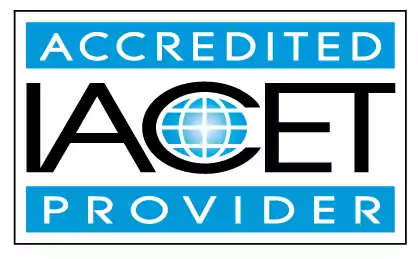Describe ways to maintain communication and ensure preparedness during emergencies
Learn how to maintain communication and ensure preparedness during emergencies in early childhood education and child care centers. Discover additional provisions to include in your emergency preparedness plan to keep children safe and secure. Be proactive in protecting the well-being of your students and staff.Trainings incorporating this outcome
Proficiency Level
Price
States
Alabama (1) Alaska (1) Alberta (1) Arizona (1) Australia (1) California (1) Colorado (1) Connecticut (1) Delaware (1) District of Columbia (1) Florida (1) Georgia (1) Hawaii (1) Idaho (1) Indiana (1) Iowa (1) Jamaica (1) Kansas (1) Louisiana (1) Maine (1) Massachusetts (1) Michigan (1) Minnesota (1) Mississippi (1) Montana (1) Nebraska (1) New Hampshire (1) New Mexico (1) New York (1) Newfoundland and Labrador (1) North Dakota (1) Nova Scotia (1) Ohio (1) Oklahoma (1) Oregon (1) Pennsylvania (1) Prince Edward Island (1) Quebec (1) Rhode Island (1) Saskatchewan (1) South Dakota (1) Texas (1) United Kingdom (1) Utah (1) Vermont (1) Virgin Islands (1) Virginia (1) Washington (1) West Virginia (1) Wisconsin (1) Wyoming (1)
2 hours courses
Related Outcomes
- Define what is an emergency and the legal requirements for emergency preparedness for child care professionals.
- Describe the components of an emergency preparedness plan for child care facilities
- Describe ways to communicate effectively with others.
- Describe the components of emergency preparedness in the child care setting.
- Describe procedures for communication and preparation during an emergency.
- Describe additional provisions to the emergency preparedness plan
- Describe how language is one of the many ways through which culture affects development.
- Define Emergency Preparedness and Response Planning
- Produce an emergency preparedness plan
- Demonstrate understanding of considerations before completing an emergency preparedness plan.
- Describe the stages of grief and the different ways children react to grief and stress.
- Identify best practices when communicating with emergency personnel.
- Describe ways to analyze classrooms for an anti-bias approach.
- Teachers will identify different ways to communicate with families
- Describe ways to interact with parents that will create a positive experience for both the parents and their children.
- Describe the various ways teachers can address challenging behaviors in the classroom.
- Describe and define various ways to prepare for earthquakes and floods.
- Describe the process of creating and communicating rules within the classroom.
- Describe nonverbal communication as it relates to coaching and mentoring.
- Describe ways that coaches and mentors can observe and assess coachees and mentees.
Related Articles
- Save Lives With Skill: CPR Training
- Emergency Preparedness in Childcare: Creating and Practicing Safety Protocols
- Frosty’s First Aid Kit: Emergency Preparedness Tips for Educators During the Holidays
- Every Childcare Provider Must Be Trained in Basic Health & Safety
- Emergency Preparedness Training Every Childcare Provider MUST Know
- Why Every Childcare Worker Needs This CPR & First Aid Training
- Basic Health and Safety Training: The Essential Guide for New Child Care
- Why Basic Health and Safety Training Is Crucial for Child Educators
- What Parents and Educators Need to Know About Child Safety
- Basic Health and Safety: The Must-Know Training for Childcare Professionals
- Basic Health and Safety in Childcare: A Complete Guide for Providers
- Emergency Preparedness Training for Childcare Providers: Keeping Kids Safe in a Crisis
- The Ultimate Guide to Medication Administration Training for Child Care Providers
- Basic Health and Safety Training: Essential Skills Every Preschool Teacher Needs
- Medical Administration Training for Child Care: Where to Get It.
- Daycare Training 101: Building a Safe, Fun, and Educational Environment
- From Band-Aids to EpiPens: Medical Administration Training in ECE
- From Tornadoes to Lockdowns: Prepare Your Childcare Center for the Unexpected
- What Training Is Required to Be a Childcare Director in Nevada?
- What Training Is Required to Be a Childcare Director in Illinois?
 0.2 CEUs
0.2 CEUs